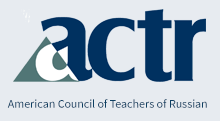Russian Language Journal
Keywords
Russia, heritage, language, National Heritage Language Resource Center
Abstract
Brecht and Ingold (2002) advocate systematic efforts to develop heritage language (HL) pedagogy to remedy U.S. language deficits: “…because of [heritage language learners’(HLLs’)] existing language and cultural knowledge, they may require substantially less instructional time than other learners to develop these skills. This is especially true for speakers of the less commonly taught languages” (p. 1).
Russian is one of those less commonly taught languages in the U.S. that is critically important for national security and the global economy. Since the early 1970s, when a large wave of Russian-speaking immigrants began to settle in the U.S., American universities have had to adjust their teaching of Russian as a foreign language to accommodate these immigrants’ children. Students who spoke Russian at home and enrolled in Russian programs that mainly catered to learners of Russian as a foreign language have become a familiar sight in Russian programs in the nearly forty years that have since passed.
Nevertheless, HL teaching methodology is still a subject of lively debate, and most programs continue to struggle in their efforts to blend heritage and non-heritage curricula into one coherent whole. Additionally, with an emphasis on high level proficiency (cf. Flagship mission), learning how to teach these students may lead to more Americans speaking Russian at an advanced or superior level, an achievement that currently eludes most students of Russian as a foreign language.
This paper’s main goal is to present a profile of Russian heritage speakers based on data from a survey by the National Heritage Language Resource Center.
Recommended Citation
Kagan, O. (2019). Russian Heritage Language Speakers in the U.S.: A Profile. Russian Language Journal, 69(1). https://doi.org/10.70163/0036-0252.1038

